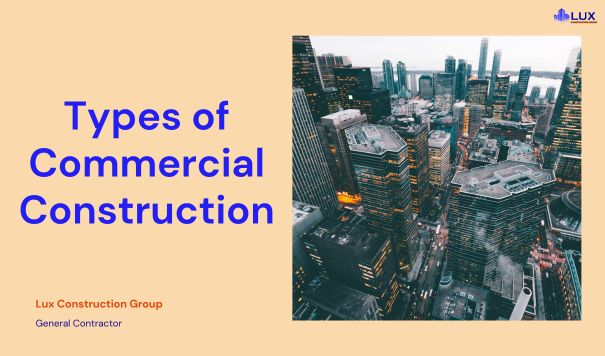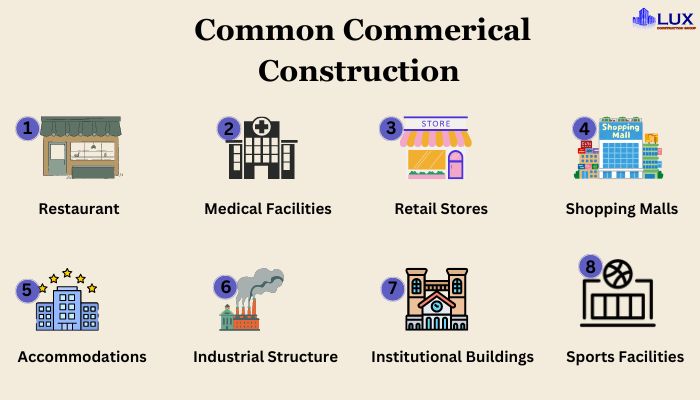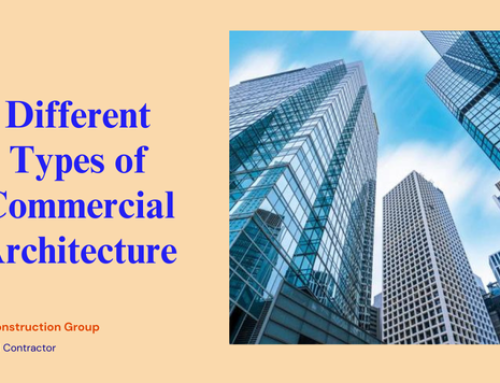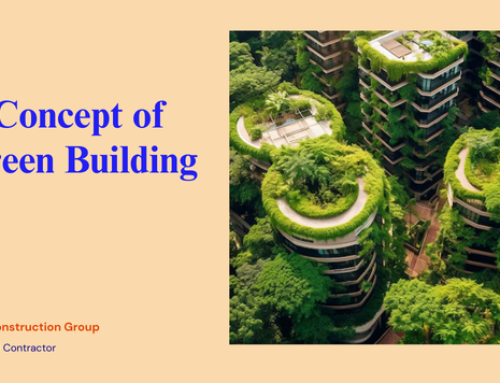Commercial construction consists of buildings and structures designed for business purposes, like office buildings, retail stores, warehouses, and factories. This process requires a team of professionals, including architects, engineers, and contractors.
The first step is to create a project plan that considers the client’s needs, the site’s size and location, and any regulatory requirements. Once the plan is ready, the construction team starts building the structure. This entire process demands great coordination, collaboration, and resources.
When completed, commercial construction projects provide valuable spaces for businesses to operate.
Well, commercial real estate typically falls into different types. And, each type contains further subdivisions with distinct characteristics. Choosing the right type of building is vital for your business’s success.
Let’s explore these types of commercial construction in detail!
Contents
List of Commercial Construction Building Types
To build commercial properties, you need a skilled commercial contractor. These essential skills enable the contractor to manage the project from design through construction.
Since commercial buildings generate revenue, it’s crucial that the general contractor can design a space that maximizes earnings while adhering to the budget.
Now, let’s explore the common types of commercial buildings.
-
Retail
Retail construction covers a range of projects including grocery stores, shopping centers, convenience stores, and individual retail shops.
Sometimes, it involves mixed-use properties that combine residential living with commercial spaces in the same building.
dditionally, many retail properties operate as franchises, requiring commercial contractors to follow a standard design and construction template while complying with local building codes and regulations.
Often, a design-build contractor will renovate existing spaces to increase customer foot traffic or to adapt to changing retail consumer needs, such as transforming one type of retail space into another.
-
Hotel
Hotels consist of clusters of rooms designed for lodging. Constructing a hotel is similar to building segments of residential structures, with each room having its own defined size, fire exit, privacy features, soundproofing, electrical setup, and plumbing.
A contractor must guarantee a consistent and equal distribution of power and water to every room. It’s also crucial to ensure ease of movement in public spaces.
Typically, hotel construction requires an experienced contractor because of the diverse requirements involved in such projects.
-
Restaurants
Restaurants serve as more than just places for customers to eat; they create a complete brand experience where customers spend 30 to 90 minutes escaping their daily routines to enjoy a different atmosphere.
Therefore, effective branding is crucial to a restaurant’s success, and skilled designers, architects, or contractors play a key role in achieving this. Local permits and regulations are critical for these projects. Additionally, it’s essential to understand safety protocols and electrical planning, particularly in the kitchen area.
For restaurant chains, successful construction means adhering to the corporation’s established guidelines. On the other hand, teams working in individual establishments must develop innovative and unique approaches to ensure comfort for customers and versatility for employees.
-
Medical facilities
This type of commercial construction project covers a variety of medical facilities, including hospitals, clinics, diagnostic centers, laboratories, rehabilitation centers, and physical therapy centers, as well as buildings catering to pets.
Constructing medical facilities differs significantly from other types of buildings due to the extensive planning required for plumbing and electrical systems, alongside the need for a variety of critical equipment.
Hospitals, for instance, must have many rooms yet maintain easy navigation and movement for patients, staff, and essential life-saving equipment. In medical facilities, accessibility is a priority more than in any other type of building.
As you develop such a project, remember that it needs to be accessible and functional for all segments of society.
-
Institutions
Institutional construction covers a wide range of building types based on the intended use and occupancy. Schools require administrative offices, classrooms, dining halls, sports facilities, and science labs.
Higher education institutions like colleges need all those components plus dormitories, outdoor spaces, parking structures, and other amenities to support student living on campus.
Architects and builders carefully analyze and integrate all the specific programming needs for these complex institutional projects to fully support the activities of students, faculty, and staff.
-
Government Buildings
Government construction projects facilitate public services at the municipal, state, and federal levels. Municipalities need city halls, courthouses, police/fire stations, libraries, and public works buildings.
State governments require capitol complexes, legislative offices, administration centers, and transportation departments.
Federal facilities include monumental projects like the U.S. Capitol, secure data/military bases, and agency headquarters built to the highest standards.
Regardless of jurisdiction, these government buildings are constructed to best serve the public needs through longevity, functionality, and inspiring civic architecture.
-
Office
Office buildings are a major segment of commercial construction, built in various formats like single-story plazas or multi-story towers.
Many are constructed as unfinished interior shells, allowing customized buildouts to suit each tenant’s needs through the fit-out process.
Others offer finished move-in ready office suites. Developers balance functionality and cost-effectiveness to provide ideal professional workspaces for businesses of all sizes to thrive.
-
Shopping malls
Shopping malls are massive enclosed destinations combining retail, dining, and entertainment under one roof.
Constructing these retail behemoths requires extensive planning to integrate dozens of stores, restaurants, theaters, and amenities. Developers master tenant mixes, seamless concourses, ambient environments, and behind-the-scenes infrastructures.
When executed well, malls become vibrant community hubs providing convenient lifestyle and retail experiences.
-
Multifamily Dwellings
Multifamily housing like apartments and condos are considered commercial real estate because they generate income for owners, despite being residential buildings.
Multifamily properties range from duplexes to high-rise towers, but all units essentially act as revenue-producing rental spaces. However, the U.S. Energy Information Administration does not include multifamily dwellings in its commercial real estate data.
While residential, multifamily housing gets categorized as commercial due to its income-generating assets.
-
Industrial Buildings
Industrial buildings are places where manufacturing, assembly, and warehousing happen.
Within the category of industrial use, logistics facilities are included. These encompass cross docks, where shipments are received and then either collected by customers or transferred between transportation companies.
Manufacturing activities within industrial buildings can vary, including light manufacturing, heavy machining, assembly, and job shops. These buildings typically feature high ceilings, spacious interiors to accommodate machinery and equipment, loading docks for receiving and shipping goods, as well as specialized electrical and HVAC systems. They are often strategically situated near shipping routes, transportation hubs, airports, train yards, seaports, and major highways.
According to the EIA, there are over 17.5 million square feet of warehouse floor space, with approximately 7 million workers employed in this sector, and an average building size of 17,400 square feet.
Wrapping Up!
Understanding the various types of commercial construction is crucial for anyone involved in real estate, development, or construction. From retail spaces to office buildings, and industrial facilities to hospitality venues, each type of commercial construction has its unique features and requirements.
A solid grasp of these different types can help you make informed decisions and navigate the industry’s complexities more effectively.
At Lux Construction Group, we specialize in both residential and commercial construction projects in Los Angeles. With our expertise and dedication to quality craftsmanship, we help you build a state-of-the-art commercial space. Contact us today to learn how we can help you with your next project.







